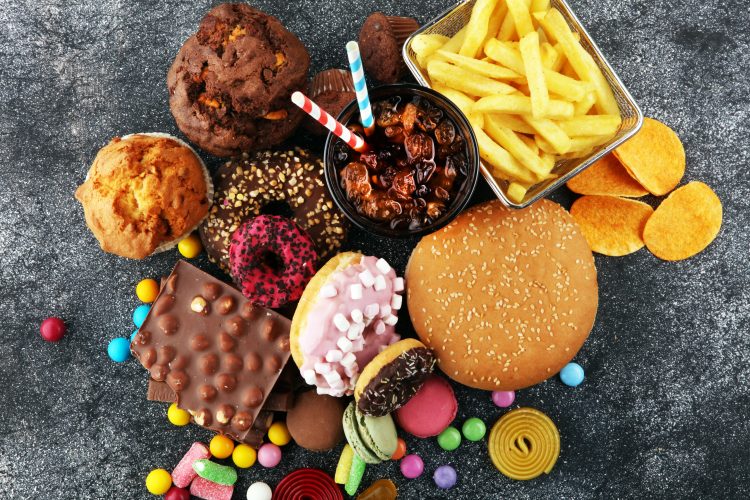As the UK confronts a shift away from ultra-processed foods, WellEasy’s Sonny Drinkwater urges industry adaptation, prioritising transparency and healthier alternatives in response to changing consumer attitudes.


By Sonny Drinkwater, Co-founder, WellEasy
Alarm bells are ringing across the UK food landscape. Despite being one of Europe’s top consumers of ultra-processed foods (UPFs), with over half our daily calories coming from this category, consumer attitudes are changing.
Recent reports, such as Mintel’s Global Drinks and Food 2024 Trends Report, point to a growing tide of concern and a shift towards healthier options. As Mintel’s Director Alex Beckett notes, “Our research reveals a clear trend: 70 percent of UK adults actively try to avoid UPFs.”
This shift does not, however, come without challenges. Consumer confusion reigns supreme: many struggle to identify UPFs lurking in their everyday diets. Surveys highlight this dilemma, with a YouGov study commissioned by the British Nutrition Foundation showing that while awareness of UPFs has increased (46 percent vs 30 percent in 2021), so has the difficulty in pinpointing them (61 percent agree clear labelling would be helpful).
The growing concern over UPFs presents both a challenge and an opportunity for the food industry. While confusion may cloud the path for some consumers, the underlying message is clear: customers prioritise healthier, less processed options, and prefer making informed food choices.
What exactly are ultra-processed foods?
The term broadly refers to foods that have five or more ingredients and include additives not typically used in home cooking. These additives include preservatives, emulsifiers, sweeteners, and artificial colours and flavours.
Examples of ultra-processed foods that you might find on the shelves of your local supermarket include ice cream, sausages, crisps, flavoured yoghurts, mass-produced bread, biscuits, and fizzy drinks. Some alcoholic drinks, including whisky, gin, and rum, may also fall into the ultra-processed category.
New committee calls for evidence in obesity investigation
A growing body of evidence shows that the increased consumption of these kinds of foods has played a role in the obesity epidemic that plagues the world. That’s because they tend to be higher in calories and lower in nutrition than their processed or unprocessed equivalents. There are other health issues associated with these kinds of foods too, including cancer, heart disease, and depression.
The top five foods that people thought were classed as ultra-processed from a list in the recent BNF survey were:
However, fewer people classified baked beans (9 percent), low-fat fruit yoghurts (10 percent), ice cream (14 percent), and sliced bread (19 percent) as ultra-processed.
It’s understandable why people eat ultra-processed foods. They’re frequently cheaper and more convenient than their unprocessed and processed counterparts and have long shelf lives, making them feel even more cost effective. But we are seeing a growing desire for customers to reduce their consumption of UPFs or avoid them altogether, instead pursuing healthier alternatives, so how should the industry respond to this consumer confusion?
Embracing transparency and catering to healthier options
Consumer priorities are shifting. Transparency and health are rising to the top of the food agenda. The industry must adapt to thrive and ensure consumers get quality products. Gone are the days of opaque ingredient lists and sugar-laden enticements. Clear and accessible labelling and nutrient-rich options are now the keys to building trust and addressing consumer confusion.
This doesn’t mean abandoning convenience but expanding offerings to include minimally processed choices that align with evolving preferences. Beyond this, there needs to be a wider push for promoting nutritionally complete, whole foods to address consumer confusion and the growing demand for healthier choices.
Consumers shouldn’t have to sacrifice convenience, scouring every label or hunting down specialist retailers to make these changes either. It’s something we firmly believe at Welleasy. That’s why we stock more than 4,000 healthy groceries for all diets and lifestyles and we also have a wide variety of resources aimed at helping people find the ingredients most beneficial to the lifestyle they want to lead.
The food industry’s future hinges on its ability to adapt to the evolving consumer attitudes towards ultra-processed foods and the desire to see more nutritionally complete foods on shelves. By prioritising transparency, diversifying offerings and investing in healthier options, the industry can satisfy consumer needs for better communicated and healthier, more accessible food choices.
About the author

 Sonny Drinkwater is the co-founder of WellEasy, an e-commerce membership platform offering healthy groceries and products with a focus on affordability and accessibility. He is passionate about making healthy living accessible to everyone and believes the current food system is “broken”.
Sonny Drinkwater is the co-founder of WellEasy, an e-commerce membership platform offering healthy groceries and products with a focus on affordability and accessibility. He is passionate about making healthy living accessible to everyone and believes the current food system is “broken”.







Lascia un commento